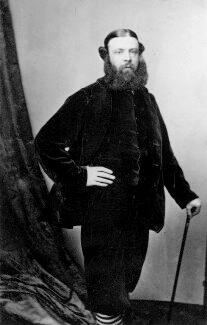
Baron Teynham, of Teynham in the County of Kent, is a title in the Peerage of England. It was created in 1616 for Sir John Roper. The family seat is Pylewell Park, near Lymington, Hampshire.

Earl of Macclesfield is a title that has been created twice. The first creation came in the Peerage of England in 1679 in favour of the soldier and politician Charles Gerard, 1st Baron Gerard. He had already been created Baron Gerard, of Brandon in the County of Suffolk, in 1645, and was made Viscount Brandon, of Brandon in the County of Suffolk, at the same time as he was given the earldom. These titles are also in the Peerage of England. Lord Macclesfield was the great-grandson of the distinguished judge Sir Gilbert Gerard, Master of the Rolls from 1581 to 1594. He was succeeded by his eldest son, the second Earl. He was involved in the Rye House Plot of 1683, was sentenced to death but later pardoned by the King. On his death without legitimate issue in 1701 the titles passed to his younger brother, the third Earl. He had earlier represented Yarmouth, Lancaster and Lancashire in the House of Commons. When he died in 1702 the titles became extinct.

Baron Dacre is a title that has been created three times in the Peerage of England, each time by writ.

Earl of Powis (Powys) is a title that has been created three times. The first creation came in the Peerage of England in 1674 in favour of William Herbert, 3rd Baron Powis, a descendant of William Herbert, 1st Earl of Pembroke. In 1687, he was further honoured when he was made Marquess of Powis.

Earl of Darnley is a hereditary title that has been created three times, twice in the Peerage of Scotland and once in the Peerage of Ireland.

Viscount De L'Isle, of Penshurst in the County of Kent, is a title in the Peerage of the United Kingdom. It was created in 1956 for William Sidney, 6th Baron de L'Isle and Dudley, VC, KG, GCMG, GCVO (1909–1991).

Henry James Scrymgeour-Wedderburn, 11th Earl of Dundee, was a Scottish nobleman, soldier and politician.
This is a list of people who have served as Lord-Lieutenant of Kent. Since 1746, all Lords Lieutenant have also been Custos Rotulorum of Kent.
This is a list of people who have served as Custos Rotulorum of Kent.
There have been two baronetcies created for people with the surname Heathcote, both in the Baronetage of Great Britain and both created in 1733. The holders of the first creation were later elevated to the peerage as Baron Aveland and Earl of Ancaster, which titles are now extinct. However, both baronetcies are extant as of 2008.

William George Spencer Scott Compton, 5th Marquess of Northampton, KG, known as Lord William Compton from 1877 to 1887 and as Earl Compton from 1887 to 1897, was a British peer and Liberal politician.

Admiral Sir Assheton Gore Curzon-Howe, was a British naval officer who served as Commander-in-Chief, Mediterranean Fleet from 1908 to 1910.
Roper is an English surname. Notable people with the surname include:

Sir Capel Molyneux, 3rd Baronet PC (Ire) was an Irish politician.

John Roper was an English peer, created Baron Teynham in 1616.
Christopher John Henry Roper-Curzon, 19th Baron Teynham DSO DSC, was a career officer of the Royal Navy and an English peer, with a seat from 1936 in the House of Lords, where from 1946 to 1959 he was Deputy to the Earl of Drogheda and then to Lord Merthyr as Chairman of Committees.

Christopher Roper, 2nd Baron Teynham was an English peer. He became the second Baron Teynham in 1618, after the death of his father, John Roper, 1st Baron Teynham.
The House of Lords Yacht Club is a yachting association for members of the House of Lords and some others connected with it, formed in 1949.

Philip Sidney, 2nd Baron De L'Isle and Dudley DL was an English Peer.
John Christopher Ingham Roper-Curzon, 20th Baron Teynham was a British peer, land agent, and Army officer.